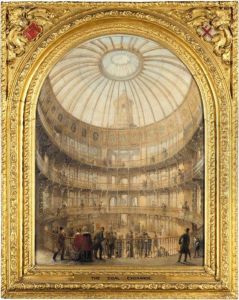James Bunstone Bunning Paintings
James Bunstone Bunning was a British architect of significance during the 19th century, born in 1802 and passing away in 1863. His career was marked by his long-standing role as the City Architect for the City of London, a position that allowed him to exert considerable influence over the development and architectural landscape of London during a period of significant change and modernization.
Bunning was educated at the Royal Academy Schools, where he honed his architectural skills and developed a keen eye for design that would characterize his later works. His early career was spent working under several prominent architects of the time, which helped him build a solid foundation in both the theoretical and practical aspects of architecture.
In 1843, Bunning was appointed as the City Architect and Surveyor for the City of London, a role he held for two decades until his death. During his tenure, he was responsible for designing and overseeing the construction of several important public buildings, infrastructure projects, and renovations within the City of London. Among his most notable works are the Coal Exchange, built between 1847 and 1849, which was celebrated for its innovative use of cast iron and was a precursor to modern steel-framed buildings. Additionally, Bunning designed the City of London School, showcasing his ability to blend functionality with aesthetic appeal.
Bunning's architectural style was predominantly Gothic Revival, a popular aesthetic during much of the 19th century, which he applied with a particular finesse to public and institutional buildings. However, he was not averse to incorporating elements of other styles when they suited the project's needs, demonstrating a versatility that was well-regarded by his contemporaries.
Apart from his architectural works, Bunning was also involved in urban planning and the improvement of public sanitation in the City of London. He advocated for the development of new streets and the widening of existing ones to ease congestion, as well as the construction of proper sewer systems to combat the spread of disease.
James Bunstone Bunning's contribution to the architectural and urban landscape of London in the 19th century was significant, leaving a legacy that can still be appreciated in the buildings and infrastructure he helped create. His dedication to improving the city for its inhabitants, coupled with his architectural talent, ensured his place as a key figure in London's architectural history.
